Kingdom Animalia Subfamily Hypostominae Phylum Chordata Rank Species | Family Loricariidae Tribe Rhinelepini Higher classification Pseudorinelepis Order Catfish | |
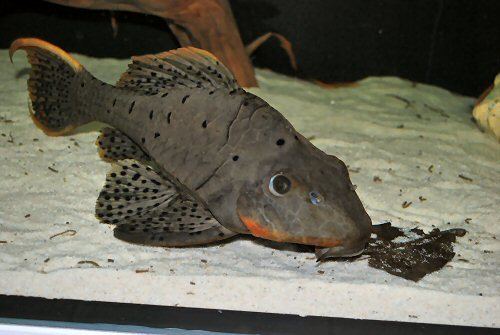 | ||
Genus Pseudorinelepis
Bleeker, 1862 Scientific name Pseudorinelepis genibarbis Similar Catfish, Lasiancistrus, Rhinelepis, Acanthicus, Parancistrus | ||
L95 wels pseudorinelepis genibarbis
Pseudorinelepis genibarbis is a species of armored catfish native to Brazil and Peru where it is found in the Upper Amazon basin.
Contents
- L95 wels pseudorinelepis genibarbis
- Rare l95 pseudorinelepis genibarbis
- Taxonomy
- Appearance and anatomy
- Ecology
- In the aquarium
- References
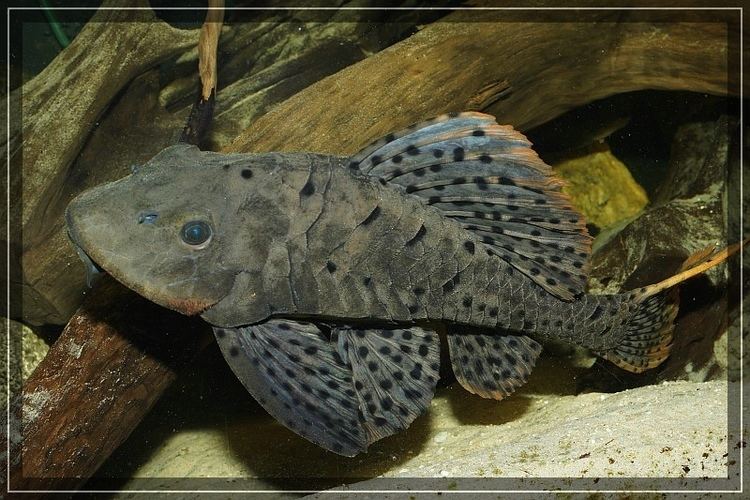
Rare l95 pseudorinelepis genibarbis
Taxonomy
Pseudorinelepis is one of three genera contained in the tribe Rhinelepini, one of the tribes of Hypostominae.

Canthopomus and Monistiancistrus are synonyms of the genus Pseudorinelepis. Previously, Pseudorinelepis was a genus of four species, but now the other three species are synonymous with P. genibarbis.
Appearance and anatomy
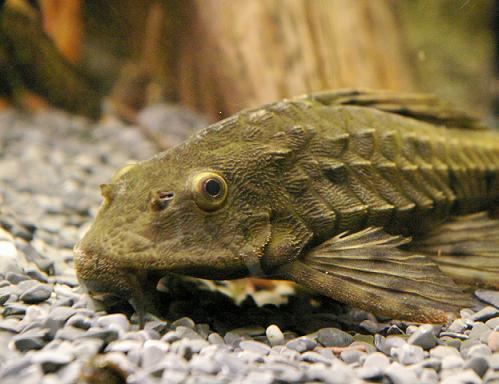
P. genibarbis reaches a length of 35.6 centimetres (14.0 in) SL. They are a large, bulky Loricariid. The armor plates along the side of the fish are thick, are keeled, and encase the whole body. The adipose fin is not present. Like other members of Rhinelepini, they do not have the omega iris that is typical in most species of Loricariids. In Iquitos, Peru, it is known as carachama sin costilla, which actually means "Loricariid without ribs"; this refers to the trait that it shares with other Rhinelepini catfish that do not have ribs past the sixth vertebra.
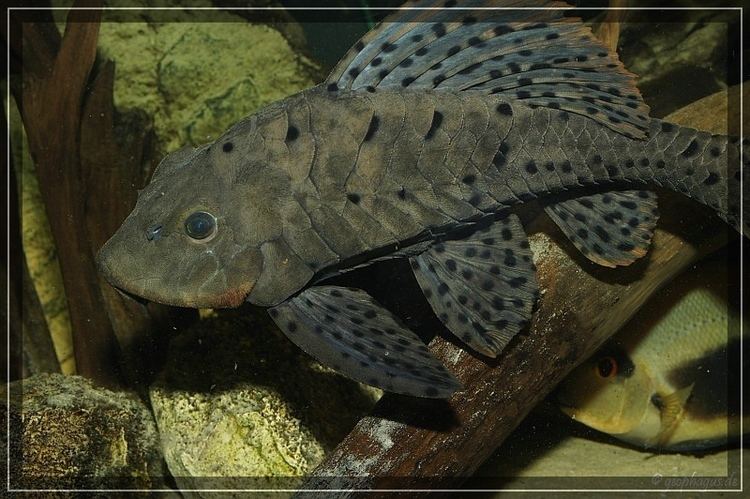
This species is highly variable in coloration. P. genibarbis may be completely dark brown to black, mottled with tan to dark brown background and black streaks, or light tan with large, sparse spots located at base of lateral plates, fin membranes, and abdomen.

Males have longer odontodes on the cheek that are denser and more numerous than in females. It has been suggested that breeding males may also have orange on the cheeks and dorsal and caudal fin spines, although this may be restricted to fish from the Branco River.
Ecology
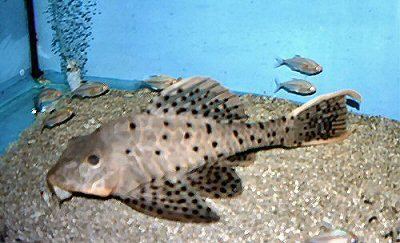
P. genibarbis is found in small, sluggish streams, floodplain lakes, and large rivers. Water quality measurements showed that the water tended to be low in oxygen, but neutral (pH 7.0).
P. genibarbis is able to swallow air, like many other Loricariids. However, this species is not an obligate air-breather. When disturbed, it is able to swallow air to become neutrally buoyant and swim in the water column.
In the aquarium
This species is an armored catfish which, since the 1990s, has started to be offered quite regularly as an aquarium fish under the name "Pineapple Pleco". The term "pleco" here is of course a popular generalisation, as taxonomy has never placed this fish in the former genus Plecostomus. The armour is also pleasantly spiked along the sides of the fish, which causes the pineapple resemblance celebrated in the commercial name of the species.
There is quite a degree of colour variation, which is probably the main reason for the confusion over species. Some males having orange cheeks, which is why "orange cheek Pleco" is another common name found in circulation. This is not made any easier by the fact that the fish will gradually darken if left in a tank with a darker substrate and lighten when kept on a lighter substrate. These changes take some time (hours or days) to effect, they do not happen quickly, so there is no real "chameleon" effect here, but no doubt it is a useful survival mechanism.
From the viewpoint of the aquarist the fish is peaceful, sociable with others of its own type, non-territorial, omnivorous, but appears to require bogwood, which it gradually gnaws away, as part of its diet. The image above shows one engaged in gnawing bogwood. Unsurprisingly, therefore, they do well in soft water, although pH values of up to 7.5 are acceptable, and the temperature range may fluctuate gently between 23-27 °C (73.4-80.6 °F.
Spawning in captivity has not yet been reliably reported. Sexual dimorphism is slight, being determined mainly by a more rounded body shape in the females, and orange "cheeks", this refers to the operculum, in the males.
The fish will, unlike most hypostomines, feed on flake from the water surface, turning upside-down to do so. It is also able to augment water-dissolved oxygen with atmospheric oxygen, but does not need to do so, having fully functional gills, so when this fish does gulp it is a useful warning that the aeration in the tank is low.
